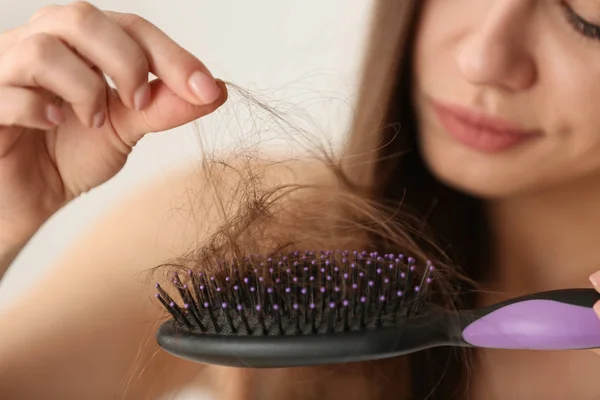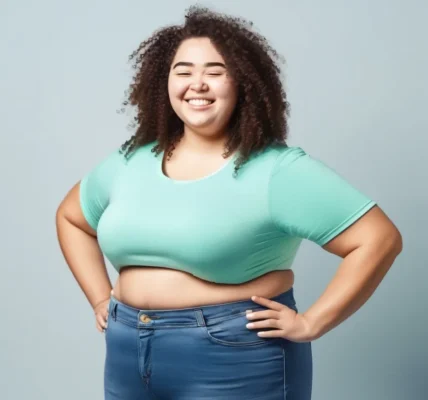Hair loss can be a frustrating and emotional experience for women, especially for those in their 30s and 40s. At this age, hair thinning and shedding can become more noticeable, making many women wonder why it’s happening and how to stop it. In this article, we’ll explore the top key causes of women’s hair loss, prevention tips, treatments, and whether graying is linked to hair loss. We’ll also discuss the impact of post-COVID hair loss and address frequently asked questions. We present you top Causes of Women’s Hair Loss and How to Prevent It.

Common Causes of Hair Loss in Women
Several factors can contribute to hair loss in women, especially during their 30s and 40s. Here are the most common causes:
- Hormonal Changes: Hormones play a significant role in hair growth. Many women experience hair thinning due to hormonal fluctuations caused by pregnancy, childbirth, perimenopause, and menopause.
- Stress: Emotional or physical stress can trigger hair loss. Telogen effluvium, a condition where hair falls out due to stress, is common after a traumatic event like illness, surgery, or emotional turmoil.
- Genetics: Hereditary hair loss, known as androgenetic alopecia, can also affect women. This condition typically causes thinning at the crown and may worsen with age.
- Nutritional Deficiencies: A lack of essential nutrients like iron, vitamin D, and biotin can lead to hair thinning and shedding. Eating a balanced diet helps promote healthy hair.
- Medical Conditions: Conditions like thyroid disorders, polycystic ovary syndrome (PCOS), and autoimmune diseases such as alopecia areata can cause hair loss.
- Post-COVID Hair Loss: Many women have reported hair loss after recovering from COVID-19. This type of hair loss is often temporary, known as telogen effluvium, and occurs due to the body’s response to illness and stress.
- Hair Care Practices: Over-styling, excessive use of heat, and harsh chemical treatments can damage hair, causing it to break and fall out over time.
Is Gray Hair Linked to Hair Loss?
Gray hair and hair loss are both signs of aging, but they are not directly related. Graying happens when pigment-producing cells in the hair follicles stop producing melanin. Hair loss, on the other hand, involves thinning or shedding of the hair itself. However, stress, hormonal changes, and genetics can influence both graying and hair loss.
How to Prevent Woman’s Hair Loss
While not all causes of hair loss are preventable, there are steps women can take to reduce the likelihood of losing hair prematurely:
- Maintain a Balanced Diet: Ensure your diet is rich in vitamins and minerals, particularly those that support hair growth like biotin, iron, zinc, and vitamin D.
- Manage Stress: Practice relaxation techniques such as yoga, meditation, or deep-breathing exercises to reduce stress and its impact on your body, including your hair.
- Avoid Harsh Treatments: Limit the use of chemical hair treatments, avoid tight hairstyles that pull on the hair, and reduce heat styling to prevent hair damage.
- Regular Scalp Care: Gently massage your scalp to increase blood flow, which can help promote hair growth. Use gentle shampoos and conditioners that nourish the scalp and hair.
Effective Treatments for Hair Loss
If you’re already experiencing hair loss, several treatments can help slow or reverse the process:
- Topical Treatments: Minoxidil, a popular over-the-counter treatment, is known to stimulate hair growth and slow hair loss. It’s available in foam or liquid form and is commonly used by women with thinning hair.
- Oral Medications: In some cases, doctors may prescribe medications like spironolactone or finasteride, which can help balance hormones and reduce hair loss in women with androgenetic alopecia.
- Hair Transplants: For women with significant hair thinning, hair transplant surgery can be a long-term solution. This procedure involves moving hair follicles from thicker areas to balding areas.
- Laser Therapy: Low-level laser therapy (LLLT) is a non-invasive treatment that uses light to stimulate hair follicles and promote hair growth. It’s commonly available in clinics or as at-home devices.
- Platelet-Rich Plasma (PRP) Therapy: This treatment involves injecting concentrated platelets from your own blood into the scalp to encourage hair growth.
Post-COVID Hair Loss: What You Need to Know
Post-COVID hair loss is becoming a growing concern among women. Many women who recovered from COVID-19 noticed significant hair shedding a few months later. The reason? Telogen effluvium, a temporary hair loss condition triggered by stress on the body, which often occurs after a fever or illness like COVID-19.
The good news is that post-COVID hair loss is usually temporary. Hair typically regrows within 6 to 9 months. If you’re experiencing this, maintaining a healthy diet, reducing stress, and using gentle hair care products can help speed up recovery.
Most Asked Questions and Answers About Hair Loss
Here are some of the most common questions women in their 30s and 40s ask about hair loss: the top causes of women’s hair loss
1. Why am I losing so much hair in my 30s and 40s? Hormonal changes, stress, and nutritional deficiencies are common reasons for hair loss in this age group. Genetics also play a role, especially if there’s a family history of hair thinning.
2. Can hair loss be reversed? In many cases, hair loss can be reversed with the right treatment. Early intervention is key, so consult a dermatologist if you’re concerned.
3. What vitamins help prevent hair loss? Biotin, vitamin D, zinc, and iron are essential nutrients for healthy hair. A balanced diet or supplements can support hair growth.
4. How long does post-COVID hair loss last? Post-COVID hair loss is temporary and usually lasts for a few months. Most women see hair regrowth within 6 to 9 months.
5. Are there natural remedies for hair loss? Some natural remedies include using essential oils like rosemary or peppermint, which are believed to promote hair growth. Scalp massages and a healthy diet can also help improve hair health.
Additional Possible Reasons for Women’s Hair Loss
In addition to medical problems that cause hair loss, lifestyle choices and aging-related factors can also contribute to hair loss in women. In addition, numerous medical disorders may be the cause of hair loss. While some of these are exclusive to women, others may affect people of either gender.
Age
Women over 40 are more likely than men to experience hair loss. Human hair growth naturally slows down with age. This implies that some hair loss associated with aging is typical.
Women may notice that as they age, their hair thins and their hairlines begin to recede. A few therapies, such as minoxidil, can assist in restoring hair health and promoting the development of hair that has been lost. Additional Possible Reasons for Women’s Hair.
Hormonal Changes and Imbalances
In addition, women’s thinning hair may be mostly caused by hormonal abnormalities. For women, the menopause is a crucial period of transition marked by numerous hormonal changes.
Hormone levels of androgens rise and those of estrogen and progesterone decrease after menopause. Thinning may result from these changes, which can also cause hair to grow more slowly and hair follicles to shrink. It might also induce hair growth in previously unhaired body parts. First of all
Therefore, hormonal hair loss in women can also be caused by PCOS, or polycystic ovarian syndrome. Among other symptoms, this illness creates cysts on a woman’s ovaries. One typical sign of PCOS is thinning hair. Fortunately, this illness is manageable with a variety of treatments.
Conclusion for causes of woman’s hair loss
Hair loss in women, particularly in their 30s and 40s, can be caused by a variety of factors including hormonal changes, stress, genetics, and even post-COVID recovery. While hair loss can feel overwhelming, there are many ways to prevent, treat, and manage it. By maintaining a healthy lifestyle, reducing stress, and seeking professional treatments when necessary, you can take control of your hair health and enjoy fuller, healthier hair. Do you relate to these top causes of women’s hair loss, and did you learn how to prevent It?
Don’t let hair loss define you—take steps today to protect and rejuvenate your hair.




